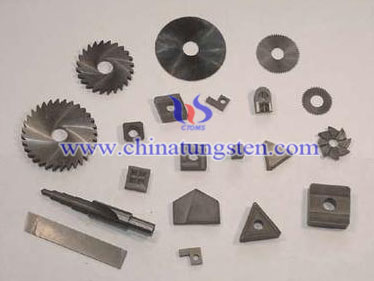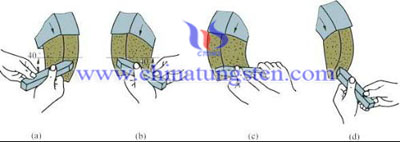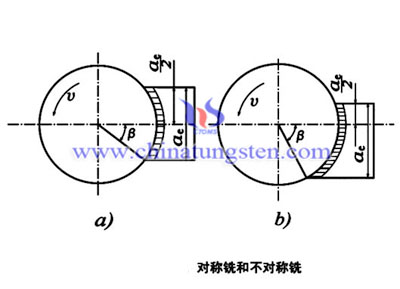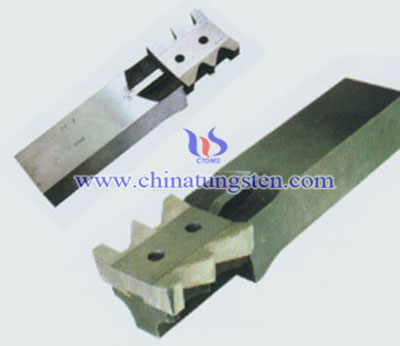Manufacturers Should Keep an Eye on Tungsten Carbide Cutting Tool Wear
- Details
- Category: Tungsten Information
- Published on Friday, 31 October 2014 18:54
- Written by xjq
- Hits: 553

Tungsten Manufacturer & Supplier: Chinatungsten Online - http://www.chinatungsten.com
Tel.: 86 592 5129696; Fax: 86 592 5129797
Email: sales@chinatungsten.com
Tungsten & Molybdenum Information Bank: http://i.chinatungsten.com
Tungsten News & Tungsten Prices, 3G Version: http://3g.chinatungsten.com
Molybdenum News & Molybdenum Price: http://news.molybdenum.com.cn
Tungsten Carbide Turning Tool Sharpening
- Details
- Category: Tungsten Information
- Published on Friday, 31 October 2014 18:49
- Written by xjq
- Hits: 535

Tungsten Manufacturer & Supplier: Chinatungsten Online - http://www.chinatungsten.com
Tel.: 86 592 5129696; Fax: 86 592 5129797
Email: sales@chinatungsten.com
Tungsten & Molybdenum Information Bank: http://i.chinatungsten.com
Tungsten News & Tungsten Prices, 3G Version: http://3g.chinatungsten.com
Molybdenum News & Molybdenum Price: http://news.molybdenum.com.cn
Tungsten Carbide Milling Cutter Milling Types
- Details
- Category: Tungsten Information
- Published on Thursday, 30 October 2014 18:02
- Written by xjq
- Hits: 520

Tungsten Manufacturer & Supplier: Chinatungsten Online - http://www.chinatungsten.com
Tel.: 86 592 5129696; Fax: 86 592 5129797
Email: sales@chinatungsten.com
Tungsten & Molybdenum Information Bank: http://i.chinatungsten.com
Tungsten News & Tungsten Prices, 3G Version: http://3g.chinatungsten.com
Molybdenum News & Molybdenum Price: http://news.molybdenum.com.cn
Counterfeit Gold-Plated Tungsten-3
- Details
- Category: Tungsten Information
- Published on Friday, 31 October 2014 08:44
- Written by Sherry
- Hits: 586
He believes these were the only instances where he wrote about possible counterfeit gold-plated tungsten bars before his March 2 column for CoinUpdate.com. Since last October, there has been ample time for either the Chinese central bank or the US bonded warehouses who supplied them with gold bars to have publicly addressed the rumors of counterfeit gold bars. None have done so. This silence could be interpreted two different ways. If the report of counterfeits is possibly true, the parties involved are just hoping that the story dies down. Or if the story is false, the parties involved may not have deemed it important enough to give it more widespread coverage by issuing a refutation.
If even a portion of the stories of counterfeit gold-plated bars turn out to be true, governments, central banks, brokerage firms, and owners of the bonded warehouses would have a strong incentive to hush up the information. In the past decade, a downpour of released unclassified US documents confirm that the US government has lied to the public for a long time about issues related to gold—going all the way back to 1918! So, he has significant suspicions that the US government today is not being honest about gold trading and inventories.
Bradshaw’s column was pretty much accurate when it cited specifics from his column last week. But it seems Bradshaw used the column to discuss the issue that really bothered him—the rumors about counterfeit gold bars at Fort Knox—about which he has never before written. The way Bradshaw wrote his column, more than one reader thought that he might have irresponsibly passed along rumors on this subject as being established fact. While others, not named in Bradshaw’s column, may have done so, he only accept the credit (and occasional blame) for what I have written. When you try to be on the cutting edge of breaking information, sometimes you blow it. He thinks I did it properly this time.
By the way, while he is discussing government deception of the public, he does admit that politicians and bureaucrats are frequently truthful. Despite my suspicious nature, he does believe the testimony before Congress a few months ago by the general counsel for the Federal Reserve. When Scott G. Alvarez made an unqualified statement that all of the gold supposedly stored in Fort Knox was actually there, even though it has not been audited since the 1950s, he bet that’s true. However, Alvarez was not asked and did not volunteer any information as to who holds title to the gold stored at Fort Knox. he has significant suspicions that some of it is owned by other parties as a result of gold swaps, particularly the German central bank.

Tungsten Alloy Manufacturer & Supplier: Chinatungsten Online - http://www.tungsten-alloy.com
Tel.: 86 592 5129696; Fax: 86 592 5129797
Email: sales@chinatungsten.com
Tungsten News & Tungsten Prices, 3G Version: http://3g.chinatungsten.com
Tungsten News & Tungsten Prices, WML Version: http://m.chinatungsten.com
Tungsten Carbide Formed Turning Tool Introduction
- Details
- Category: Tungsten Information
- Published on Thursday, 30 October 2014 18:00
- Written by xjq
- Hits: 550

Tungsten Manufacturer & Supplier: Chinatungsten Online - http://www.chinatungsten.com
Tel.: 86 592 5129696; Fax: 86 592 5129797
Email: sales@chinatungsten.com
Tungsten & Molybdenum Information Bank: http://i.chinatungsten.com
Tungsten News & Tungsten Prices, 3G Version: http://3g.chinatungsten.com
Molybdenum News & Molybdenum Price: http://news.molybdenum.com.cn





 sales@chinatungsten.com
sales@chinatungsten.com